Susan Price's Blog: Susan Price's Nennius Blog, page 15
April 5, 2013
The Brothers Grimm and the Internet
This was sent to me recently, as one of those email jokes which are forever being circulated: -
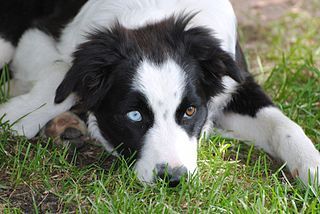 said, "Sit all day by the door of your house and bark at anyone who comes in or walks past. For this, I will give you a life span of twenty years."
said, "Sit all day by the door of your house and bark at anyone who comes in or walks past. For this, I will give you a life span of twenty years."
The dog said, "That's a long time to be barking. How about only ten years and I'll give you back the other ten?"
And God saw it was good.
On the second day, God created the monkey and said, "Entertain people, do tricks, and make them laugh. For this, I'll give you a twenty-year life span."
The monkey said, "Monkey tricks for twenty years? That's a pretty long time to perform. How about I give you back ten like the dog did?"
And God, again saw it was good.
On the third day, God created the cow and said, "You must go into the field with the farmer all day long and suffer under the sun, have calves and give milk to support the farmer's family. For this, I will give you a life span of sixty years."
The cow said, "That's kind of a tough life you want me to live for sixty years. How about twenty and I'll give back the other forty?"
And God agreed it was good.
On the fourth day, God created humans and said, "Eat, sleep, play, marry and enjoy your life. For this, I'll give you twenty years."
But the human said, "Only twenty years? Could you possibly give me my twenty, the forty the cow gave back, the ten the monkey gave back, and the ten the dog gave back; that makes eighty, okay?"
"Okay," said God, "You asked for it."
So that is why for our first twenty years, we eat, sleep, play and enjoy ourselves. For the next forty years, we slave in the sun to support our family. For the next ten years, we do monkey tricks to entertain the grandchildren. And for the last ten years, we sit on the front porch and bark at everyone.
Life has now been explained to you.
There is no need to thank me for this valuable information. I'm doing it as a public service. If you are looking for me I will be on the front porch.
Over twenty years ago, I wrote this, in my book Ghost Song: -
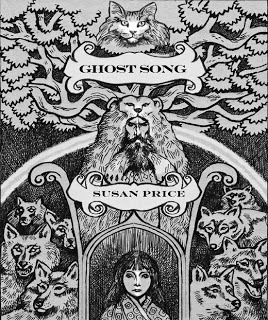 Ghost SongKuzma said to him, 'Syngva, listen. I shall tell you a story:- In the beginning the Shaman who made the world called all his creatures before him, and he gave to them all thirty years of life.
Ghost SongKuzma said to him, 'Syngva, listen. I shall tell you a story:- In the beginning the Shaman who made the world called all his creatures before him, and he gave to them all thirty years of life.
'But,' said the donkey to him, 'my life is to be spent bending my back under heavy loads. I am to be kicked and beaten to make me go fast when the load on my back makes me go slow. If that is to be my life, so be it - but thirty years is too long, Grandfather.' The Shaman pulled his beard thoughtfully, and saw that the donkey was right. So he took eighteen years of life from the donkey, and left him only twelve. The donkey was grateful. Next came the dog. 'Grandfather,' said the dog, 'my life is all running and biting and barking, and it is a good life. But how shall I live it for thirty years? Long before then my legs will be weak and lame, my teeth will be broken and worn, my bark will be unheard. Spare me this life without life.' So the Shaman was kind, and he took twelve years of life from the dog. Then came the monkey, and the monkey said, 'Don't make me live thirty years, Grandfather. I am only liked when I am funny. How can I be funny for thirty years? And though it pleases people to laugh at me, it is no pleasure to me to be jeered at and called fool. Take some of these years from me.' So the Shaman took ten years of life from the monkey. Then came man and woman, and they said, 'Grandfather, how long are we to live?' 'Thirty years,' said the Shaman. 'Oh, Grandfather,' said man and woman, 'at the end of thirty years, we shall have come to our full strength, we shall have built ourselves a house, we shall have planted a field, and we shall have children. Are we to die then, and leave all that? Thirty years, Grandfather - it's not long enough. Give us some more years.' The Shaman was pleased that one of his creatures wanted more of the life he had created. Gladly, he gave man and woman the eighteen years he had taken from the donkey. 'Give us more, Grandfather.' So the Shaman gave them the twelve years he had taken from the dog. 'Give us more, Grandfather.' The Shaman gave them the ten years he had taken from the monkey. And so men and women live seventy years in this world. And now you see, Syngva, what human life is. For the first thirty years, men and women live as the Shaman intended men and women to live. But then they must endure the eighteen years meant for the donkey: eighteen years of hard labour, of drudgery, of heavy loads. Then come the twelve years taken from the dog: twelve years lived weak and lame, toothless and aching, snapping and snarling. And, at the end, come the ten years from the monkey: ten years chattering and gibbering to themselves, while others point, and laugh and mock. ‘Syngva; is this what you choose?' '[My father] is in his dog-years,' Ambrosi said. 'I am still living as the Shaman intended men to live. It would be wicked to leave him now. Even when he's an old monkey, I shall try not to make fun of him. And when he is dead, I shall come with you.' 'You must choose now,' Kuzma said. 'Three hundred years of life as a shaman, and power, and rebirth. Or thirty years of human life, followed by the years the donkey, the dog and the monkey are too proud to endure. Now choose, choose! Once and for all!' 'Grandfather,' Ambrosi said, 'I can make no choice until my father dies.' Kuzma reached out his hand, and touched Ambrosi over his heart. From Ambrosi's shirt he drew a long, white thread. He said, 'You think that all these years I have been tormenting you.' Again his hand reached out and drew from Ambrosi's shirt a long, long black thread. 'You think that if you never saw me again, in dreams or awake, you would be at peace.' A third time Kuzma reached out, and drew from Ambrosi's shirt a thread of bright scarlet. 'But I have been protecting you, Syngva, from the spirits who marked you for a shaman, and who will not allow you to refuse.' He reached out and pushed Ambrosi backwards, so he fell back into the snow. 'Go and live the life you choose.' And Ambrosi fell out of his dream and into sleep on the floor of the tent, and from that sleep he awoke mad.'
I invented Ambrosi and Kuzma, but I didn’t invent the story Kuzma tells. I adapted it from one of the Grimm Brothers’ less well-known stories. It had stuck in my head when I read it, and it suited my purpose (although, of course, in Grimm, the god of the story is the Christian god.) The Grimm Brothers first published their collection in 1812, over two hundred years ago. They collected their stories from the people around them, so presumably these stories were commonly known then. At a rough estimate, the story was probably a hundred years old when the brothers wrote it down. So a 300 year old folk-story is circulating as an internet joke. I would assume that some other reader of Grimm, like myself, had turned it into the email - except that my uncle once told me a story about how a cat pulled a loaded barge along a canal (he came from a bargee-family.) I later came across that story in a foot-note to a Ben Jonson play, explaining an obscure reference in the text. I am pretty sure my uncle had no interest in Ben Jonson's plays.
I love the way these old stories circle the world like currents in the ocean - sometimes sinking down deep, sometimes rising to the surface.
You may think that's a rare gem of philisophy you've just found in some forgotten book unearthed from a junk-shop and unread for a hundred years - but someone, somewhere, is sitting in a bar and telling the same story as a joke. Stories. Harder to kill than dandelions.
Picture credits: Collie dog, Canada Hky, via Wikimedia Commons.
The Ghost World Sequence can be found here.
Everyone of you will laugh at this! I said so.....On the first day, God created the dog and
 said, "Sit all day by the door of your house and bark at anyone who comes in or walks past. For this, I will give you a life span of twenty years."
said, "Sit all day by the door of your house and bark at anyone who comes in or walks past. For this, I will give you a life span of twenty years."The dog said, "That's a long time to be barking. How about only ten years and I'll give you back the other ten?"
And God saw it was good.
On the second day, God created the monkey and said, "Entertain people, do tricks, and make them laugh. For this, I'll give you a twenty-year life span."
The monkey said, "Monkey tricks for twenty years? That's a pretty long time to perform. How about I give you back ten like the dog did?"
And God, again saw it was good.
On the third day, God created the cow and said, "You must go into the field with the farmer all day long and suffer under the sun, have calves and give milk to support the farmer's family. For this, I will give you a life span of sixty years."
The cow said, "That's kind of a tough life you want me to live for sixty years. How about twenty and I'll give back the other forty?"
And God agreed it was good.
On the fourth day, God created humans and said, "Eat, sleep, play, marry and enjoy your life. For this, I'll give you twenty years."
But the human said, "Only twenty years? Could you possibly give me my twenty, the forty the cow gave back, the ten the monkey gave back, and the ten the dog gave back; that makes eighty, okay?"
"Okay," said God, "You asked for it."
So that is why for our first twenty years, we eat, sleep, play and enjoy ourselves. For the next forty years, we slave in the sun to support our family. For the next ten years, we do monkey tricks to entertain the grandchildren. And for the last ten years, we sit on the front porch and bark at everyone.
Life has now been explained to you.
There is no need to thank me for this valuable information. I'm doing it as a public service. If you are looking for me I will be on the front porch.
Over twenty years ago, I wrote this, in my book Ghost Song: -
 Ghost SongKuzma said to him, 'Syngva, listen. I shall tell you a story:- In the beginning the Shaman who made the world called all his creatures before him, and he gave to them all thirty years of life.
Ghost SongKuzma said to him, 'Syngva, listen. I shall tell you a story:- In the beginning the Shaman who made the world called all his creatures before him, and he gave to them all thirty years of life.'But,' said the donkey to him, 'my life is to be spent bending my back under heavy loads. I am to be kicked and beaten to make me go fast when the load on my back makes me go slow. If that is to be my life, so be it - but thirty years is too long, Grandfather.' The Shaman pulled his beard thoughtfully, and saw that the donkey was right. So he took eighteen years of life from the donkey, and left him only twelve. The donkey was grateful. Next came the dog. 'Grandfather,' said the dog, 'my life is all running and biting and barking, and it is a good life. But how shall I live it for thirty years? Long before then my legs will be weak and lame, my teeth will be broken and worn, my bark will be unheard. Spare me this life without life.' So the Shaman was kind, and he took twelve years of life from the dog. Then came the monkey, and the monkey said, 'Don't make me live thirty years, Grandfather. I am only liked when I am funny. How can I be funny for thirty years? And though it pleases people to laugh at me, it is no pleasure to me to be jeered at and called fool. Take some of these years from me.' So the Shaman took ten years of life from the monkey. Then came man and woman, and they said, 'Grandfather, how long are we to live?' 'Thirty years,' said the Shaman. 'Oh, Grandfather,' said man and woman, 'at the end of thirty years, we shall have come to our full strength, we shall have built ourselves a house, we shall have planted a field, and we shall have children. Are we to die then, and leave all that? Thirty years, Grandfather - it's not long enough. Give us some more years.' The Shaman was pleased that one of his creatures wanted more of the life he had created. Gladly, he gave man and woman the eighteen years he had taken from the donkey. 'Give us more, Grandfather.' So the Shaman gave them the twelve years he had taken from the dog. 'Give us more, Grandfather.' The Shaman gave them the ten years he had taken from the monkey. And so men and women live seventy years in this world. And now you see, Syngva, what human life is. For the first thirty years, men and women live as the Shaman intended men and women to live. But then they must endure the eighteen years meant for the donkey: eighteen years of hard labour, of drudgery, of heavy loads. Then come the twelve years taken from the dog: twelve years lived weak and lame, toothless and aching, snapping and snarling. And, at the end, come the ten years from the monkey: ten years chattering and gibbering to themselves, while others point, and laugh and mock. ‘Syngva; is this what you choose?' '[My father] is in his dog-years,' Ambrosi said. 'I am still living as the Shaman intended men to live. It would be wicked to leave him now. Even when he's an old monkey, I shall try not to make fun of him. And when he is dead, I shall come with you.' 'You must choose now,' Kuzma said. 'Three hundred years of life as a shaman, and power, and rebirth. Or thirty years of human life, followed by the years the donkey, the dog and the monkey are too proud to endure. Now choose, choose! Once and for all!' 'Grandfather,' Ambrosi said, 'I can make no choice until my father dies.' Kuzma reached out his hand, and touched Ambrosi over his heart. From Ambrosi's shirt he drew a long, white thread. He said, 'You think that all these years I have been tormenting you.' Again his hand reached out and drew from Ambrosi's shirt a long, long black thread. 'You think that if you never saw me again, in dreams or awake, you would be at peace.' A third time Kuzma reached out, and drew from Ambrosi's shirt a thread of bright scarlet. 'But I have been protecting you, Syngva, from the spirits who marked you for a shaman, and who will not allow you to refuse.' He reached out and pushed Ambrosi backwards, so he fell back into the snow. 'Go and live the life you choose.' And Ambrosi fell out of his dream and into sleep on the floor of the tent, and from that sleep he awoke mad.'
I invented Ambrosi and Kuzma, but I didn’t invent the story Kuzma tells. I adapted it from one of the Grimm Brothers’ less well-known stories. It had stuck in my head when I read it, and it suited my purpose (although, of course, in Grimm, the god of the story is the Christian god.) The Grimm Brothers first published their collection in 1812, over two hundred years ago. They collected their stories from the people around them, so presumably these stories were commonly known then. At a rough estimate, the story was probably a hundred years old when the brothers wrote it down. So a 300 year old folk-story is circulating as an internet joke. I would assume that some other reader of Grimm, like myself, had turned it into the email - except that my uncle once told me a story about how a cat pulled a loaded barge along a canal (he came from a bargee-family.) I later came across that story in a foot-note to a Ben Jonson play, explaining an obscure reference in the text. I am pretty sure my uncle had no interest in Ben Jonson's plays.
I love the way these old stories circle the world like currents in the ocean - sometimes sinking down deep, sometimes rising to the surface.
You may think that's a rare gem of philisophy you've just found in some forgotten book unearthed from a junk-shop and unread for a hundred years - but someone, somewhere, is sitting in a bar and telling the same story as a joke. Stories. Harder to kill than dandelions.
Picture credits: Collie dog, Canada Hky, via Wikimedia Commons.
The Ghost World Sequence can be found here.
Published on April 05, 2013 16:05
March 29, 2013
March Winds Do Blow...
March came in like a lion and is going out like a tiger. A siberian tiger.
Just a couple of days ago I had to dig my car out of a snow-drift - with the very welcome assistance of my brother and cover-artist, Andrew.
As my car is one of those little 'jelly-mould' Micras, it looked like an igloo - I wish I'd thought to take a photo. Snow was heaped on its roof to a depth of a good six inches, and was mounded in a smooth curve from its roof to the ground in front of its bonnet. The snow had drifted to half-way up its doors, and both the rear window and number-plate were buried.
What fun we had, Andrew and I, shovelling water! It was hard, frozen snow that could be cut into blocks with the spade. I had to get one of those flexible plastic chopping boards from my kitchen to try and lever the snow off the car roof - and some of it was just too hard to dislodge.
My aunt, feeder of foxes, hedgehogs, badgers and any other wildlife that wants to drop by her garden, sends me these photos.
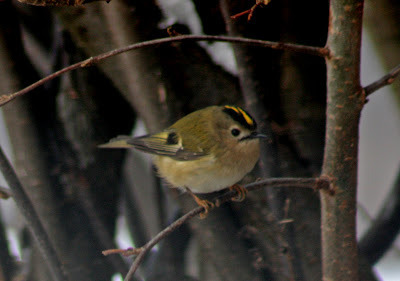
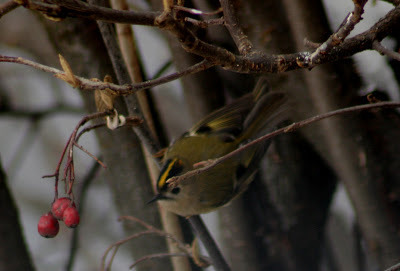 Goldcrest
Goldcrest
They're of a goldcrest, which she hasn't seen on her bird-tables for about three years. This pair are now gorging themselves on fat balls, peanuts and seeds of all kinds.
They are pretty little birds, with their flash of a gold crest, and they are absolutely tiny - smaller than a wren. They're about as big as your top thumb joint.
And the other brother, Adam - here's what he's been up to, instead of drawing Blott cartoons...
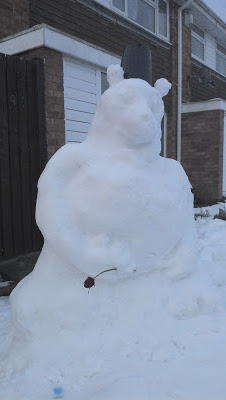
Just a couple of days ago I had to dig my car out of a snow-drift - with the very welcome assistance of my brother and cover-artist, Andrew.
As my car is one of those little 'jelly-mould' Micras, it looked like an igloo - I wish I'd thought to take a photo. Snow was heaped on its roof to a depth of a good six inches, and was mounded in a smooth curve from its roof to the ground in front of its bonnet. The snow had drifted to half-way up its doors, and both the rear window and number-plate were buried.
What fun we had, Andrew and I, shovelling water! It was hard, frozen snow that could be cut into blocks with the spade. I had to get one of those flexible plastic chopping boards from my kitchen to try and lever the snow off the car roof - and some of it was just too hard to dislodge.
My aunt, feeder of foxes, hedgehogs, badgers and any other wildlife that wants to drop by her garden, sends me these photos.

 Goldcrest
GoldcrestThey're of a goldcrest, which she hasn't seen on her bird-tables for about three years. This pair are now gorging themselves on fat balls, peanuts and seeds of all kinds.
They are pretty little birds, with their flash of a gold crest, and they are absolutely tiny - smaller than a wren. They're about as big as your top thumb joint.
And the other brother, Adam - here's what he's been up to, instead of drawing Blott cartoons...

Published on March 29, 2013 17:05
March 22, 2013
Comics
“Well done! You've saved the day! Let me reward you with these tickets to the circus and a slap-up feed at the Hotel De Posh!”
The Hotel De Posh's signature dish: a mountain of mashed potato with sausages sticking out horizontally all round it, and a bottle of fizzy lemonade (or, more likely, Irn Brue). Desperate Dan's favourite, his Aunt Aggie's speciality, is far too famous for it to be worth my mentioning it here. Lord Snooty and his pals. Roger the Dodger, Minnie The Minx, Dennis the Menace. Little Plum and the Three Bears. And Pansy Potter, who let slip her Dundee origins because her title didn't rhyme unless pronounced with a Scots accent. She was the Strong Man's Dotter. A subtle Scottish cadence ran through all the speech bubbles. People were asked to fetch messages, for instance, while we ran errands in the Black Country. And all those Dads in the last frame, with their slippers! They're all tall, lanky, square-headed Scots. When I was a child, our house had lots of books – shelved floor to ceiling in most rooms, piled on the stairs and window-sills – but we were never bought comics. (In theory, we had weekly pocket money to buy our own, but in fact this pocket money arrived in our pockets only once or twice a year). My parents had nothing against comics, they just didn't think them worth spending their scarce income on, when they could buy us a second-hand book from Dudley market for very little more. Next door lived a brother and sister who were obviously filthy rich, because they had several comics each week. On Friday evenings it was my regular chore to carry next door a bloody joint of meat wrapped in newspapers (the Sunday joint, delivered by a mobile butcher, and taken in by my mother for her neighbour.) Every month or so my reward was to have my arms piled with a great stack of comics and magazines, and I'd hardly be able to say, 'thank you,' for grinning. Home I'd scuttle, clutching the pile, bursting in through the back door with a cry of, “Comics!” “Bags me the Beano,” my Dad would say. The Bunty, The Judy, June, Jackie and, later, The Romeo and The Valentine. Even, occasionally, The Red Letter, which my mother remembered from her own young days. Looking at the cover she said, with satisfaction, “They've still got the nasty neighbour peering round the curtains – she was always there, every week.” But the girls' comics were quickly skimmed through and thrown aside, with their tales of butch (female) car mechanics made-over to win beauty contests, and champion hockey teams kidnapped and forced to play for aliens. They were appetisers, something to read while other people had the comics you really wanted. Those were the boy's comics: The Beano, The Dandy, The Topper. The Valiant, the Buster, The Hotspur, The Victor. After we'd finished with them, my Dad took them to work, and his workmates read them during their tea break, their feet up on the stove, laughing at The Bash Street Kids. It takes a real man, I think, to admit that he finds the Beano a good read. My Dad (born in 1928) often told us that he'd bought the very first copy of The Beano, complete with its give-away 'flash-bang'. He wished he'd had the sense to put it away carefully and keep it mint. Instead, it was probably used to light a fire. (And research suggests it was actually The Dandy he bought. Wishful remembering: The Beano was always our favourite, The Dandy a poor second). My Dad, my brothers, my sister and I, all drew. The house was littered with opened out envelopes and other scrap paper covered with drawings, and we pored over the comics' illustrations as well as the stories. (We could never understand why friends didn't seem to notice, or care, when a favourite strip was drawn by a different artist). The comic art was often of a high order. The drawings of 'The Steel Claw' (in The Valiant) were favourites: a sort of comic-strip 'film-noir'. But the Bash Street Kids, careering along in a massed group, all feet off the ground at once, were a joy, full of liveliness and movement. The artist who drew the thick, woodcut-like drawings for 'Faceache' and 'Jonah' was a master. His strips were not only grotesquely beautiful, but laugh-out-loud funny. I remember one in particular, where Faceache had resolved 'to be good'. This turning over of a new leaf was often how a story of Minnie the Minx, or Dennis the Menace, or Roger the Dodger began. Anyway, Faceache swore, that for that day at least, he wouldn't twist his face into terrifying gurns, causing unrest and panic among the populace. Instead, he was going to be good and help the baker. Queue a series of wonderfully managed panels where Faceache burning his hand coincides with an innocent delivery man looking through the window just as pain convulses Faceache's already unlovely features into a particuarly inventive and novel shape. Panic and unrest ensues. It was almost filmic. I remember my Dad took that particular strip to read in the bathroom. He said it nearly gave him a rupture. My brother, sister and I used to discuss the comics like a sort of junior book-club. We laughed at Captain Hurricane, his 'raging furies' and exclamations of 'Suffering Sausage Munchers' and 'Cowardly Cabbage Crunchers!' (My mother told us that, as a child during the Second World War, she'd seriously believed that Germans only ever said, 'Achtung, Pig-Dog!' Well, apart from 'Heil Hitler!' obviously.) We discussed whether it was sensible of Fish Boy (who had been abandoned in the wild and raised by fishes), to take an injured fish from the water and lay it on a rock to 'bathe its wounds'. And which was better – Galaxo, the giant robot ape, or the boy who controlled an army of little robot men by means of an armband (the name of this strip escapes me). We were cutting our critical teeth. At the same time I was reading the Norse Myths, Hans Anderson, Kipling – but that was 'literature'. I could enjoy it, but hands off. Comics were on our level. Often well-drawn, often funny, often inventive, but emphatically not literature. We could kick them around, say and think what we liked about them, have our own opinion. We learned discernment, by and for ourselves. Once learned – and not least of the lessons was that it was enjoyable – we could carry it with us into other fields. I once read an article in which a critic declared that it was impossible to appreciate Tolstoy and Mickey Mouse equally. In order to be refined enough to appreciate Tolstoy, I gather, you had to leave Mickey far behind. Rubbish. You can enjoy and appreciate Mickey – and Dennis, and The Bash Street Kids – and Bugs Bunny and Yosemite Sam and Daffy Duck - for what they are, and for the skill, verve and wit that they have. And then you can shift gears - though whether you are shifting up or down is a matter of opinion - and appreciate Tolstoy, on his level, as someone who had entirely different aims. The ability to move from one to the other demonstrates a flexible mind – which is probably necessary for creativity. George Orwell got a lot out of smutty postcards. It takes a realcritic to appreciate both Mickey and Natasha.
The Hotel De Posh's signature dish: a mountain of mashed potato with sausages sticking out horizontally all round it, and a bottle of fizzy lemonade (or, more likely, Irn Brue). Desperate Dan's favourite, his Aunt Aggie's speciality, is far too famous for it to be worth my mentioning it here. Lord Snooty and his pals. Roger the Dodger, Minnie The Minx, Dennis the Menace. Little Plum and the Three Bears. And Pansy Potter, who let slip her Dundee origins because her title didn't rhyme unless pronounced with a Scots accent. She was the Strong Man's Dotter. A subtle Scottish cadence ran through all the speech bubbles. People were asked to fetch messages, for instance, while we ran errands in the Black Country. And all those Dads in the last frame, with their slippers! They're all tall, lanky, square-headed Scots. When I was a child, our house had lots of books – shelved floor to ceiling in most rooms, piled on the stairs and window-sills – but we were never bought comics. (In theory, we had weekly pocket money to buy our own, but in fact this pocket money arrived in our pockets only once or twice a year). My parents had nothing against comics, they just didn't think them worth spending their scarce income on, when they could buy us a second-hand book from Dudley market for very little more. Next door lived a brother and sister who were obviously filthy rich, because they had several comics each week. On Friday evenings it was my regular chore to carry next door a bloody joint of meat wrapped in newspapers (the Sunday joint, delivered by a mobile butcher, and taken in by my mother for her neighbour.) Every month or so my reward was to have my arms piled with a great stack of comics and magazines, and I'd hardly be able to say, 'thank you,' for grinning. Home I'd scuttle, clutching the pile, bursting in through the back door with a cry of, “Comics!” “Bags me the Beano,” my Dad would say. The Bunty, The Judy, June, Jackie and, later, The Romeo and The Valentine. Even, occasionally, The Red Letter, which my mother remembered from her own young days. Looking at the cover she said, with satisfaction, “They've still got the nasty neighbour peering round the curtains – she was always there, every week.” But the girls' comics were quickly skimmed through and thrown aside, with their tales of butch (female) car mechanics made-over to win beauty contests, and champion hockey teams kidnapped and forced to play for aliens. They were appetisers, something to read while other people had the comics you really wanted. Those were the boy's comics: The Beano, The Dandy, The Topper. The Valiant, the Buster, The Hotspur, The Victor. After we'd finished with them, my Dad took them to work, and his workmates read them during their tea break, their feet up on the stove, laughing at The Bash Street Kids. It takes a real man, I think, to admit that he finds the Beano a good read. My Dad (born in 1928) often told us that he'd bought the very first copy of The Beano, complete with its give-away 'flash-bang'. He wished he'd had the sense to put it away carefully and keep it mint. Instead, it was probably used to light a fire. (And research suggests it was actually The Dandy he bought. Wishful remembering: The Beano was always our favourite, The Dandy a poor second). My Dad, my brothers, my sister and I, all drew. The house was littered with opened out envelopes and other scrap paper covered with drawings, and we pored over the comics' illustrations as well as the stories. (We could never understand why friends didn't seem to notice, or care, when a favourite strip was drawn by a different artist). The comic art was often of a high order. The drawings of 'The Steel Claw' (in The Valiant) were favourites: a sort of comic-strip 'film-noir'. But the Bash Street Kids, careering along in a massed group, all feet off the ground at once, were a joy, full of liveliness and movement. The artist who drew the thick, woodcut-like drawings for 'Faceache' and 'Jonah' was a master. His strips were not only grotesquely beautiful, but laugh-out-loud funny. I remember one in particular, where Faceache had resolved 'to be good'. This turning over of a new leaf was often how a story of Minnie the Minx, or Dennis the Menace, or Roger the Dodger began. Anyway, Faceache swore, that for that day at least, he wouldn't twist his face into terrifying gurns, causing unrest and panic among the populace. Instead, he was going to be good and help the baker. Queue a series of wonderfully managed panels where Faceache burning his hand coincides with an innocent delivery man looking through the window just as pain convulses Faceache's already unlovely features into a particuarly inventive and novel shape. Panic and unrest ensues. It was almost filmic. I remember my Dad took that particular strip to read in the bathroom. He said it nearly gave him a rupture. My brother, sister and I used to discuss the comics like a sort of junior book-club. We laughed at Captain Hurricane, his 'raging furies' and exclamations of 'Suffering Sausage Munchers' and 'Cowardly Cabbage Crunchers!' (My mother told us that, as a child during the Second World War, she'd seriously believed that Germans only ever said, 'Achtung, Pig-Dog!' Well, apart from 'Heil Hitler!' obviously.) We discussed whether it was sensible of Fish Boy (who had been abandoned in the wild and raised by fishes), to take an injured fish from the water and lay it on a rock to 'bathe its wounds'. And which was better – Galaxo, the giant robot ape, or the boy who controlled an army of little robot men by means of an armband (the name of this strip escapes me). We were cutting our critical teeth. At the same time I was reading the Norse Myths, Hans Anderson, Kipling – but that was 'literature'. I could enjoy it, but hands off. Comics were on our level. Often well-drawn, often funny, often inventive, but emphatically not literature. We could kick them around, say and think what we liked about them, have our own opinion. We learned discernment, by and for ourselves. Once learned – and not least of the lessons was that it was enjoyable – we could carry it with us into other fields. I once read an article in which a critic declared that it was impossible to appreciate Tolstoy and Mickey Mouse equally. In order to be refined enough to appreciate Tolstoy, I gather, you had to leave Mickey far behind. Rubbish. You can enjoy and appreciate Mickey – and Dennis, and The Bash Street Kids – and Bugs Bunny and Yosemite Sam and Daffy Duck - for what they are, and for the skill, verve and wit that they have. And then you can shift gears - though whether you are shifting up or down is a matter of opinion - and appreciate Tolstoy, on his level, as someone who had entirely different aims. The ability to move from one to the other demonstrates a flexible mind – which is probably necessary for creativity. George Orwell got a lot out of smutty postcards. It takes a realcritic to appreciate both Mickey and Natasha.
Published on March 22, 2013 17:05
March 15, 2013
A Stationary Love...
 Have you ever, gentle blog-reader, found yourself in one of those giant stores that caters for offices? Have you wandered into the aisle that's lined with paperclips of every hue, size and kind – striped, plastic-covered, metal, circular... Little pots for holding pens. Bulldog clips! Transparent folders. Box folders. Folders with clips. Folders – sorry, I have to wipe drool away – with a metallic sheen, in silver, green, purple, blue.
Have you ever, gentle blog-reader, found yourself in one of those giant stores that caters for offices? Have you wandered into the aisle that's lined with paperclips of every hue, size and kind – striped, plastic-covered, metal, circular... Little pots for holding pens. Bulldog clips! Transparent folders. Box folders. Folders with clips. Folders – sorry, I have to wipe drool away – with a metallic sheen, in silver, green, purple, blue. There are those little round paper rings for reinforcing the hole in the paper that fits into folders with ring-clips. Is there a dynasty somewhere, grown rich on the manufacture and sale of little sticky paper rings? Envelopes of every colour and size, padded and unpadded, self-sealing and ones you have to lick. Pens! Oh, the pens. I hardly ever write with a pen anymore, but oh, the appeal of the pens. Roller-ball, felt, glitter, calligraphy... With special nibs!
 I don't think it's just me, or even just writers. Not long after I first met my partner, I asked him for a lift to a big stationary store, so I could bring home some heavy boxes of typing paper in his car. In the store a sort of rapture came over him and he drifted from aisle to aisle, examining paper and card of different weights, storage boxes of every kind for storing every kind of thing, rulers, compasses, calculators, coloured inks, ledgers, portfolios (WITH AND WITHOUT INNER POCKETS)... In a dreamy, wondering voice, he said “I didn't know places like this existed...!” Yet another benefit to him of knowing me. And soon he was returning reguarly, alone, to look at the big set-squares, the highlighter pens and the wall charts.
I don't think it's just me, or even just writers. Not long after I first met my partner, I asked him for a lift to a big stationary store, so I could bring home some heavy boxes of typing paper in his car. In the store a sort of rapture came over him and he drifted from aisle to aisle, examining paper and card of different weights, storage boxes of every kind for storing every kind of thing, rulers, compasses, calculators, coloured inks, ledgers, portfolios (WITH AND WITHOUT INNER POCKETS)... In a dreamy, wondering voice, he said “I didn't know places like this existed...!” Yet another benefit to him of knowing me. And soon he was returning reguarly, alone, to look at the big set-squares, the highlighter pens and the wall charts.
 I've have other friends, quite unconnected to writing, to whom I've said, “I just need to nip into the stationary store...” and they've been visibly thrilled. “Oh, I'll come in with you,” they've said, a little too quickly and eagerly. And once through the doors, they've slipped away to finger the mouse-mats and the desk-tidies, perhaps bought themselves a new pencil or a block of post-it notes in that hard-to-come-by shade of chartreuse, which will make them the envy of their work-colleagues. Why do office supplies have this allure? Where's the evolutionary basis? In all essentials we are still, we're told, the hunter-gatherers of the Ice Age. It makes sense, then, that the sight of three red deer stags picking their way past me to reach a river should rivet me to the spot. But why does a fixture full of envelopes, with or without windows, in buff, cream or white, have the same effect? What would Ice-Age man do with envelopes?
I've have other friends, quite unconnected to writing, to whom I've said, “I just need to nip into the stationary store...” and they've been visibly thrilled. “Oh, I'll come in with you,” they've said, a little too quickly and eagerly. And once through the doors, they've slipped away to finger the mouse-mats and the desk-tidies, perhaps bought themselves a new pencil or a block of post-it notes in that hard-to-come-by shade of chartreuse, which will make them the envy of their work-colleagues. Why do office supplies have this allure? Where's the evolutionary basis? In all essentials we are still, we're told, the hunter-gatherers of the Ice Age. It makes sense, then, that the sight of three red deer stags picking their way past me to reach a river should rivet me to the spot. But why does a fixture full of envelopes, with or without windows, in buff, cream or white, have the same effect? What would Ice-Age man do with envelopes?
Published on March 15, 2013 17:05
March 1, 2013
In Conversation with Katherine Roberts
This month's conversation is with my good friend, Katherine Roberts...
Sue Price:- Kath, I've often told the tale of how we sat in the garden at Charney and talked about the traditional publishing industry's coming doom and what we could do about it. And it was you who first alerted me to the possibilities of self-publishing on Kindle, and started Authors Electric - and then, not so long after it started, you got a four-book contract with Templar and left us to plough our independent way alone. But now you've self-published your wonderful I Am The Great Horse, so you're working both sides of the street - or field, if I continue the ploughing metaphor. What are your thoughts on the whole trad vs indie thing?
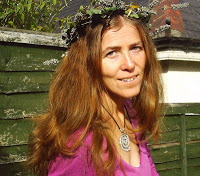 Katherine Roberts Kath Roberts:- Well, the four books with Templar - the Pendragon Legacyquartet about King Arthur's daughter - are all delivered now (three are published, the fourth "Grail of Stars" comes out in October). But with two books coming out each year and associated promotional duties, the deadlines came thick and fast and left me very little time to think about anything else. I also wanted the focus to be on my new series rather than my backlist, and so I hopped over the field gate - sorry! Meanwhile, it seems Authors Electric grew quite happily without me. I'm not sure the doom we spoke of applies to the traditional publishing industry, which still seems to work brilliantly for the right sort of books. It more applies to authors, who just don't seem to have long term careers in traditional publishing any more. And that's where indie publishing comes in... to fill the gap. If you want to stick to the field metaphor, I see us all ploughing the same earth, just on different sides of the hedge and in different ways. Traditional publishing is the farmer with the big machinery and all the chemicals and hormones he needs to make his crops grow. Indie publishers have wonky furrows and a couple of stubborn mules to pull their hand ploughs, and they're probably organic so have to do a lot of back-breaking weeding. But books and authors can thrive and grow in both types of field. It's when you get cross-pollination, things start to get interesting...
Katherine Roberts Kath Roberts:- Well, the four books with Templar - the Pendragon Legacyquartet about King Arthur's daughter - are all delivered now (three are published, the fourth "Grail of Stars" comes out in October). But with two books coming out each year and associated promotional duties, the deadlines came thick and fast and left me very little time to think about anything else. I also wanted the focus to be on my new series rather than my backlist, and so I hopped over the field gate - sorry! Meanwhile, it seems Authors Electric grew quite happily without me. I'm not sure the doom we spoke of applies to the traditional publishing industry, which still seems to work brilliantly for the right sort of books. It more applies to authors, who just don't seem to have long term careers in traditional publishing any more. And that's where indie publishing comes in... to fill the gap. If you want to stick to the field metaphor, I see us all ploughing the same earth, just on different sides of the hedge and in different ways. Traditional publishing is the farmer with the big machinery and all the chemicals and hormones he needs to make his crops grow. Indie publishers have wonky furrows and a couple of stubborn mules to pull their hand ploughs, and they're probably organic so have to do a lot of back-breaking weeding. But books and authors can thrive and grow in both types of field. It's when you get cross-pollination, things start to get interesting...
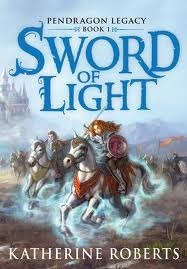 Sword Of Light
Sword Of LightSue Price:- Cross-pollination? Do you mean when a big publisher gives a contract to an Indie?
Kath Roberts:- That’s one interesting thing that seems to be happening. Authors are bypassing the agent or slush pile routes, and testing their work on real readers. It seems a scary route to take, though – you need to be pretty confident in your material, and you also need to make sure it has been edited and proofread, which requires more time and expense than simply sending your manuscript to a list of agents/publishers. It obviously works for some, and a best-selling indie title must be very attractive to publishers. But it remains to be seen if authors taking the indie route to a publishing contract have any more of a long term publishing career than those traditionally published authors being sidelined to make way for them. Cross pollination can work both ways.
Sue Price:- Yeah, the formerly published are going indie, and the indies are signing with big firms – a-a-and all spin round and face the other way! And then, as soon as their sales drop a percentile, the big firms will drop the ex-indies and take up a new crop – who will quickly be dropped in their turn. Everybody will have a book contract for fifteen minutes! Is that how it will work?
Katherine Roberts:- Fifteen minutes of fame? Maybe. But I actually think not much has changed. I've noticed the same disillusionment among indies on the KDP forum, just as you get disillusioned writers who have been traditionally published but not made their first million yet. The difference is the indies don't have anyone to blame except themselves.
Susan Price:- So, do you think, when the dust settles, that the same people are going to be left standing there, rubbing their eyes? – I mean, the ‘in it for the long run’ writers who want to write more than they want success or money. Maybe the publishing firms will cherry-pick the few they hope will have a big success – quickly dropping them if this proves not to be true – and what used to be the ‘mid-list’ will self-publish. But the crowd presently jostling for space on the self-publishing platforms will thin out as those who were expecting to get rich quick fall away and search for other routes to riches. (Which will still leave a pretty big crowd of ex mid-listers!) Do you think new e-publishing firms will emerge from the dust-cloud? One of the Authors Electric, Stephanie Zia, started by publishing her own books and now has turned into a small e-publisher, Blackbird Digital Books.
Katherine Roberts:- I actually think the mid-list vanished a few years ago in traditional publishing, and Amazon cleverly stepped in to fill the gap. But in another reversal, I hear that publishers who used to lock their doors against unagented authors are now opening up the slush pile again (Macmillan being one of the latest to do so). So it seems to me that while publishers and booksellers are busy changing the rules, authors are carrying on doing what they do best... success is meant to be 5% talent and 95% hard work, after all, so yes if you discount the "lottery winners" like J K Rowling etc, I think the same authors will succeed in the end. Some are doing this by creating their own publishing lists, others are adapting to market forces, whatever works best for the current climate, I suppose. What I've noticed is that there is a very large pool of new authors out there and far fewer authors with a career lasting 10 years or more. Once an author has been publishing for 10 years, I think it highly unlikely they'll give up trying to reach readers, whatever external challenges they may face. I for one love the way e-books have opened doors for us, even if I haven't cracked the secret of selling them myself yet!
Susan Price:- I’m really pleased to see the Great Horse out as an indie, though – it was (and is) such a good book, and deserved better treatment. I firmly believe that your publishers didn’t know how to market it, because it’s an original. And now it amounts to an original work of art! Not only written and self-published by you, but with a striking new cover – very like a Greek vase painting – designed by you. Tell us something about that.
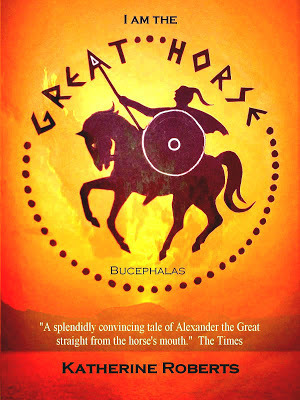 'I Am The Great Horse' by Katherine Roberts
'I Am The Great Horse' by Katherine RobertsKatherine Roberts:-Thank you for your kind words! Yes, looking back I'd agree I Am The Great Horse is a book that's hard to place on a traditional shelf, and I'm grateful to Chicken House for publishing it once they realised this. That was a brave thing to do. Since they are essentially a children's list, they decided to aim the original book at the (girly) horse market, which made sense at the time - yet it seemed a shame to miss out on those adult historical readers who might enjoy a novel about Alexander the Great, as well as boys who might like to read about his adventures. When I published the Kindle version I wanted to make it more adult/boyish in feel, but without losing the horse angle. Hence the new cover, which was actually inspired by an ancient coin of Alexander riding Bucephalas. If you're interested, there's more on my blog about how I created the e-cover, as well as a whole series of posts I wrote about this book while it was still in print, including guest posts from my editor and the illustrator who drew the map.
And, after going into hiding from the Black Dog last week (as if!), Blott is back!
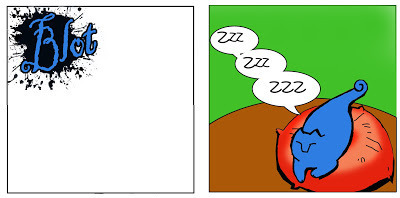
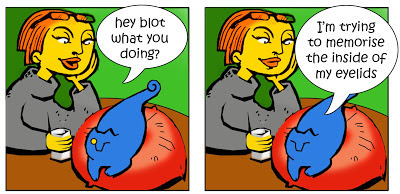
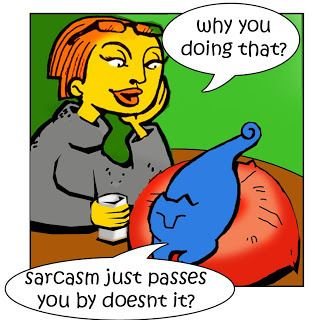
Published on March 01, 2013 16:05
February 22, 2013
Story Tellers and Black Dogs
This comes from my collection of traditional stories, The Story Collector, which is now published with Smashwords - so you can download it to a number of devices, including Kindle.Artwork, copyright Andrew Price ‘The sun sank and vanished and darkness gathered quickly… seemed to rise from among the gravestones, to come ducking out from beneath the low-hanging branches of the yew. Mr Grimsby looked down his road home and saw it dwindling, fading in darkness…From the north side of the churchyard came trotting a dog, a big dog, and it fell in at his side. It was a black and shaggy dog, large of head and large of paw, and its back stood as high as Mr. Grimsby’s wide waist. It looked up at him in the dusk and its eyes…gleamed red.“Hello boy… What a fine fellow you are, aren’t you?”“I’ll see you home,” said the dog… ”A story to shorten the way, since you’re a man for stories… What story shall it be?”
Mr Grimsby is an elderly, retired man who amuses himself by collecting old stories from his servants and neighbours. Here, as he pauses for a moment to rest, he meets a Churchyard Grim. The dog (or Grim) walks with Mr. Grimsby, telling a long and complicated tale to pass the journey. (The story the Grim tells, if you’re curious, is ‘The Land Where All The Animals Say “Good Day!’)
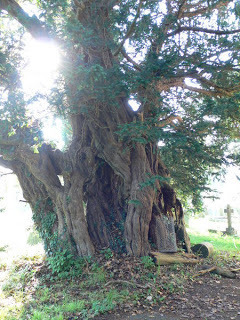 Ancient churchyard yew: Eirian Evans,
Ancient churchyard yew: Eirian Evans,At the story’s end, the Grim says,
“And now we must say, ‘good day’…I can go with you no further.” With something of a start…Mr. Grimsby looked about him. They stood before a tall door… “Where is this?... I don’t know this place.”
"No,” said the dog. “But you’ll come to know it.”I must go home,” Mr.Grimsby said, and turned to leave the strange door - but behind him was nothing but the utmost darkness… “Where are we?”
“At the end of the world,” said the dog. “That is Heaven’s Door. Knock, and they’ll let you in.”And the… the Churchyard Grim, trotted back along the road… back to Earth, back to his church where, in the last darkness of the night, he slipped again into his own grave in the north side of the churchyard.To meet the…Churchyard Grim means that your own death will follow soon.
The Grim is a legend found all over Scandinavia and the British Isles. It used to be believed, it’s said, that the first man buried in a new churchyard had to remain on Earth, to guard the church and its dead against the devil. To spare a Christian this fate, and free them to salvation, a black dog was buried in the graveyard before any human dead. The dog then became the Grim, or guardian spirit of the church. (Behind this may lie the even older practice of burying a sacrifice or ancestor under a building. Stone Age earthworks have been found with burials in their ditches, and Stone Age houses with graves under their floors.) The Grim was usually buried on the churchyard’s north side – which was associated with things a little spiritually dubious. The Devil’s power was strongest in the north. Suicides were buried outside the churchyard wall, on the north side; and, in Scandinavia, if not elsewhere, women traditionally stood on the north side during services, to form a protective layer between men and the Devil. (Women being more sinful anyway, were already closer to the Devil, and might as well be offered to him as a tidbit.) Was the Grim buried on the north side because that was where a guard dog was most needed? Or – as with women – was there felt to be some connection between the Grim and the Devil, or to older, pagan gods? It’s been pointed out that the areas of England where the Black Dog walks are the areas where the Scandinavian influence is strongest, and the Black Dog may be Garmr, the watchdog who guards the gates of Hel, the underworld’s queen. In Eddic poetry Garmr is also associated with Odin, and Odin was the lord of the dead. The Romans referred to him as the Germanic Mercury – thus firmly identifying Him as a soul-leader, one who guides the dead to the next world. Later, post-Christianity, Odin became the leader of the Wild Hunt, riding to hounds after lost souls. But this was after Christianity had re-cast him as a devil. If the Romans took a quick glance and readily identified him with their Mercury, who kindly guided the dead on their road, then Odin, originally, must have had a similar role. And while the Black Dog is often thought of as sinister and death-dealing, there are kindly Black Dogs. In Somerset the ghostly ‘Gurt Dog’ is said to protect children and also travellers, walking beside them through dangerous places and frightening away the ill-intentioned. The Black Dogs of Lincolnshire are also gentle and protective. In fact, the Black Dog is most malevolent and is called ‘Shuck’ (Devil) in those parts of Essex and Norfolk which were most puritan in the 17th Century, and most prone to label as ‘devilish’ anything that smacked of old, pre-Christian traditions. Why does the Black Dog appeal to me? Well, anything connected with Odin, that most fascinating and complicated of gods, appeals to me – but there’s also the fact that the Black Dog, in the form of Padfoot, walked the lanes of my childhood – those sooty little country-lanes trapped within the sprawl of the industrial Black Country. And my Dad once met him! He used to tell us the tale of how, walking home from a late night at work, he met the ghost dog – a story which I tell in my collection, Nightcomers . My Dad took Padfoot walkies and lived to tell us the tale – but I think that when we have to take the road out of this life, there are worse ways to do it than in the company of a gurt, kindly black dog. Especially if it tells a story to pass the time!
This post originally appeared on Lucy Coat's interesting site.
Published on February 22, 2013 16:05
February 15, 2013
Bannocks!
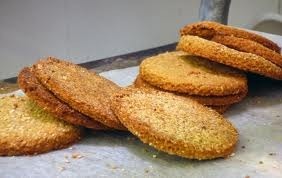 Bannocks or oatcakes Otherwise known as oatcakes, but I prefer the name bannocks because of Great Uncle Gordon.
Bannocks or oatcakes Otherwise known as oatcakes, but I prefer the name bannocks because of Great Uncle Gordon.Great Uncle Gordon, I've always been told, was put into the Army Catering Corps for his National Service, and learned to cook. He came home on leave, full of tales of army life and eager to show off his new skills.
His mother, Great Gran Price, went off to bed early, leaving the young folk - Gordon's younger sister and his cousins, gathered in the kitchen. Gordon declared he was going to make them all some "Scottish Bannocks, like we make in the army."
Great Gran, upstairs in her bed, heard a lot of clattering and banging coming from downstairs, which instantly made her suspicious (she'd raised a large and unruly family.) She yelled out, "What are you doing down there?"
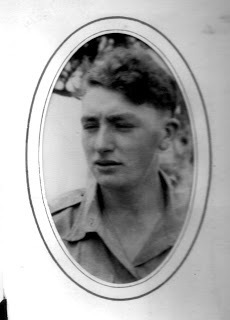 Great Uncle Gordon, poised to make bannocks Going to the foot of the stairs, Gordon said, "I'm making some Scottish Bannocks like they showed me in the army!
Great Uncle Gordon, poised to make bannocks Going to the foot of the stairs, Gordon said, "I'm making some Scottish Bannocks like they showed me in the army!Great Gran could hear things like pots and pans being rattled, but she always had a problem hearing what people said. "Eh?"
"I'm showing 'em what they taught me in the army - I'm making some Scottish Bannocks!"
"Eh?"
"I'm making some Scottish Bannocks!" Gordon yelled.
"You what?"
"I'm making some bannocks, Scottish bannocks, like they - oh, what's the - !"
"EH?"
"I'm making! Scottish! Bannocks!"
"You what?"
"I'm making bannocks!"
"You'm making what?"
"Bannocks! Scottish Bannocks!
"What?"
"Bannocks! Bannocks, bannocks, bannocks!"
And then Great Gran rushed down the stairs in her nightie, her long grey plait swinging, and thumped him from the bottom of the stairs back into the kitchen, shouting, "I'll teach you to use that language to me!"
I've been keeping up the family tradition in past weeks - making oatcakes, that is, not rushing downstairs and thumping people. I have been known to do that, but not for many years.
What I have done a lot in recent years is buy packs of oatcakes rather than bread. I could never eat the bread before it went stale, and it always made me bloated anyway. I prefer oatcakes, and I find the description on the packet, 'Rough Scottish Oatcakes,' strangely alluring. But a couple of weeks ago I found I'd run out, and I didn't want to make another trip to the shops because I was trying to get some work done. So I looked up a recipe and made some. I had everything I needed in my cupboards, and it was quick and dead easy.
This is what you need: 225g of oats, 60g wholewheat flour, half a teaspoon bicarbonate of soda, 60g butter, 1 teaspoon of salt, half a teaspoon of sugar and 60-80ml of hot water.
Heat your oven 190c or Gas Mark 6.
Put all the dry ingredients in a bowl and mix together. Rub in the butter - or whizz it all up in a blender until it's like breadcrumbs.
Then add the hot water, from a kettle, and mix together into a thick dough.
Roll out - or press out with your hands - until it's half a centimetre thick. Then cut into rounds with an upturned glass or cutter - or just cut into triangles, or 'farls' (as Davy tells me they're called.)
Put on a baking tray and bake for 20-30 minutes. Let them cool before storing in a tin.
I think they're better than the shop-bought ones.
I've been experimenting. Make them with the coarse porridge oats that I make my breakfast porridge with and you get a spongy sort of bannock, which is still tasty. Whiz the porridge oats in a blender for a few seconds, and you get a fine oat flour, which makes a smoother, crisper, crunchier bannock.
Since I've cut out sugar and cut down on salt, I missed these out altogether, and still got a good bannock - though I think a little salt does add a savour. The teaspoon given in the recipe seems far too much to me, though, and I would half or even quarter it.
Instead of rubbing in the butter, or whizzing in the blender, you can melt the butter in the 80ml hot water, and stir it in. If the oat-flour is very fine, you'll probably need to add more water.
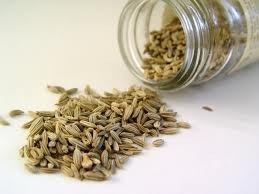 I've been adding flavourings too. Fennel worked very well. Hazelnuts too. Someone suggested that I soak some raisins in the hot water, and add them, and I'll try that soon.
I've been adding flavourings too. Fennel worked very well. Hazelnuts too. Someone suggested that I soak some raisins in the hot water, and add them, and I'll try that soon.I'm not sure that I'll ever bother to buy bannocks again.
Bannocks! I said, I don't think I'll ever - oh, bannocks.
I had to look it up. The OED says it's 'Scottish and Nrth Eng. OE bannuc, prhps fr Celtic.' If only Great-Gran had known that.
And 'farl' is 'Scottish 'thin cake, originally quadrant shaped, of oatmeal or flour, from obsolete fardel, quarter or fourth.' More of that 'slang' that Davy was tawsed for using. And I think it's a bit of a cheek to call a word that's still commonly used 'obsolete.'
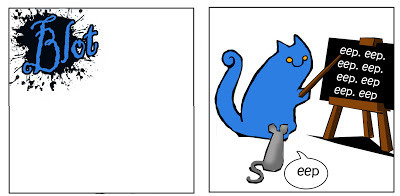
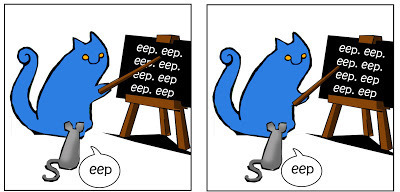
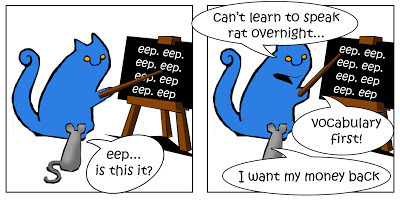
Published on February 15, 2013 16:05
February 1, 2013
Stories and Memories
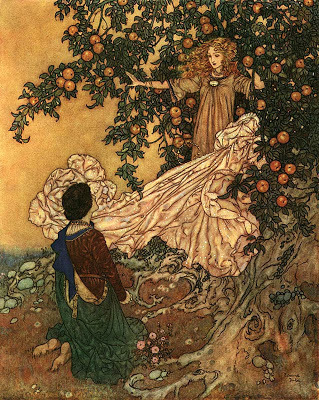 Artist: credited to Dulac, but looks like Rackham to me (wikipedia) A short blog this week.
Artist: credited to Dulac, but looks like Rackham to me (wikipedia) A short blog this week.Not long ago I posted a blog which talked about how vital stories are: how children need to be told stories in order to learn language.
Stories enlarge a child's vocabulary and teach them the different ways in which language can be used: plain narrative, or heightened rhythmic, poetic speech, or the formal unemotive language of academia or law courts.
Telling stories also rehearses the listeners in various situations, leading them through emotions, helping them to identify with beings other than themselves. An argument could be made for our humanity being built of story.
My cousin, Alan Hess - who often shows up in the comments as 'Anonymous' signing himself as 'Manxli' - sent me this link. I watched it and felt like cheering.
So there you are. Stories are memory-boxes, which protect and keep save those delicate, unstable memories, fragile as soap-bubbles.
Now I know why my parents told me so many stories about their childhood, and about their parents and grandparents - and why I loved to hear them so much.
I have been handed down a box of stories containing scraps of laughter and bits of feeling from as much as a hundred years ago; and when I consider it, they have certainly played a part in shaping the person I am.
And those other stories - the folktales, the myths and legends. They are boxes storing the memories, observations, laughter and wisdom of thousands of people, from millenia ago.
Telling stories is important.
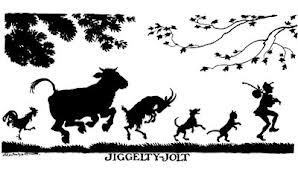
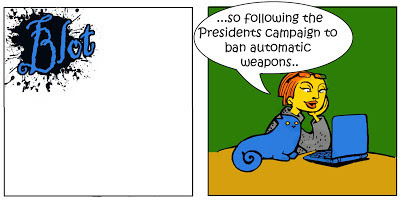
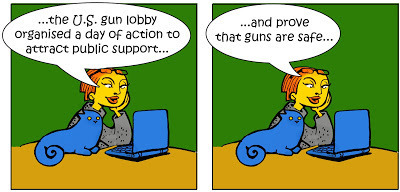
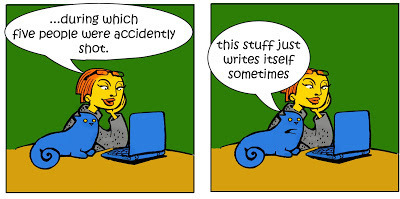
Published on February 01, 2013 16:05
January 25, 2013
In Conversation with... Judith Key
This month the conversation is with Judith Key, the writer and artist.
She contacted me recently because she’d seen, on my website, that my original agent was Osyth Leeston – and Osyth was also Judith’s first agent. So we got talking…
Judith: I was interested in what you said about 'the daemon' and 'the editor.' (Previous ‘In Conversation’ blog with Jenny Alexander.) We all have daemons to a greater or lesser degree. It's that part of us we learn to suppress as we are growing up. As adults we control our emotions, and 'edit' our behaviour. On the whole it's a good thing. But that process of control can lead to all kinds of negative inhibitions too - it can be a double-edged sword. When it comes to artistic expression, young children show a natural creativity, while adults are hampered by all sorts of hang-ups.
When I was teaching art to adults, I saw how students were often afraid to make a mark, in case they 'got it wrong.' Each had an editor on her shoulder with an iron grip on the paintbrush.
For a long time I was like that with writing. I couldn't get the stories out. I didn't know why. I kept hitting a wall. For years I stopped writing altogether. It was an amorous tramp who freed me from it. Sue Price: Oh, yes? Tell us about the amorous tramp!
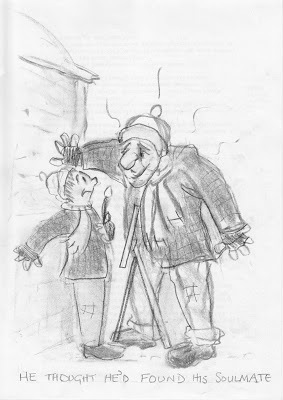 Judith and the tramp
Judith and the tramp © Judith Key Judith: It happened one February morning, when I was sketching in a nearby village. It was bitterly cold, but I was well wrapped up with woolly cap pulled down, scarf pulled up, fingerless mitts and old painting jacket, frayed at the cuffs and splattered with paint. I had my back to the village pump, looking towards the ruins of an old abbey.
A figure appeared, weaving up the hill, evidently the worse for drink. He paused at the point where the road forked either side of the pump, and stood swaying, uncertain of which way to go.
To my dismay, I saw we were dressed almost alike - old jacket, woolly cap, scarf and fingerless mitts. If anything he looked the smarter as his jacket wasn't spattered with paint.
He must have misread my expression, because in the next moment I was buttonholed against the pump, and staring into his bloodshot eyes.
Then came the chat up line every girl dreads: 'Hello, Darling, going my way?' Fortunately, the abbey grounds were open for the annual snowdrop walk. I managed to leg it and spent 3 hours wandering the grounds alone, mentally picking the petals off the snowdrops, thinking, 'He loves me, he loves me not, he's smitten. Help.'
With the light failing, I had to take a risk. I stood at the exit and checked up and down the lane. No sign of him. But the car was half a mile away, and between here and there were any number of bushes behind which an amorous tramp could be waiting to leap out on his lady love... But that day marked a turning point in my life. Our love remained unrequited, but a few weeks later I found myself standing in front of an audience that had paid good money for a painting demo that was going wrong. The paint wouldn't dry and I ran out of chat. It must have been the repeat of that 'rabbit-in-the-headlights' moment, when I was accosted by the tramp, that triggered what came next. I said, 'A bizarre thing happened when I went to sketch this abbey...' and out spilled the story. It was unplanned, natural and spontaneous. I drew an off-the-cuff caricature by way of illustration. The story and the drawing just seemed to do it themselves, without any help or hindrance from me. I'll always be grateful to that tramp, as his unwanted attention had the effect of shifting my chronic case of writer's block, and unleashed a second career as a performance storyteller. It was a turning point. From that day, stories were back in my life. Storytelling and caricature went hand in hand. Each informed the other. But when I turned from oral to written work again, I had trouble. I was right back to where I was before. I'd get so far and hit that wall. Maybe I wasn't a writer... Then I twigged that what I was doing was trying to edit the thing before I'd written it. Instead of allowing myself to be a conduit for the story, I'd turned myself into a dam.
I had to get the story out, however bad, fractured, uncontrolled. Then I'd have something to work with. To do that I had to forget the 'self', just as I had that day during the painting demo. Whatever was compelling me to write this story, I had to stand aside and give it free rein.
Letting the daemon take over can be scary - where is it going to take you? You can find yourself in a headlong gallop over some hair-raising territory in a direction you hadn't planned. Helen Cresswell once said to me, 'If you don't know where your story is going, it will sure as Hell get you there!' I didn't know what she meant at the time, but now I think I do.
Sue Price: I know what you mean – and I often find myself writing about things I know nothing about, or scenes I find disturbing, because the ‘daemon’ has dragged me there. But if anything, I’m more scared of the daemon leaving me to find my own way! I know that, without it, my writing is mechanical. The ‘editor’ can’t do it alone!
Judith: But at some point the editor has to get involved. When daemon and editor work hand in hand, I see it as a relationship like that between horse and rider, the one all power and energy, the other harnessing that energy and with a guiding hand on the reins. When daemon and editor are at odds, it's more like a wrestling match. The work they are trying to create ends up as a casualty.
Sue Price: Yes!
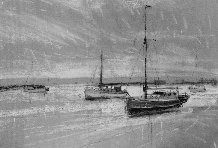 'Evening Light' © Judith Key Judith: I'm inspired by landscape. Wild places. Heath, woodland, marsh. One of my favourite places is the Wash. It's an open, floating world. The editor in me sees structure, shape, tone, this colour set against that. But what excites me is the atmosphere, the shimmering light, the racing cloud shadows. Then I hear the lonely call of an oystercatcher, and I'm taken to a different level again.There is sadness and longing in those marshes.
'Evening Light' © Judith Key Judith: I'm inspired by landscape. Wild places. Heath, woodland, marsh. One of my favourite places is the Wash. It's an open, floating world. The editor in me sees structure, shape, tone, this colour set against that. But what excites me is the atmosphere, the shimmering light, the racing cloud shadows. Then I hear the lonely call of an oystercatcher, and I'm taken to a different level again.There is sadness and longing in those marshes. That's when I tell myself I've found the 'soul' of the place. But what am I actually connecting with? Maybe some aspect of myself.
Sue Price: Whatever it is, I can see it means a lot to you – your description is beautiful.
But you said you’d tell me about when you had to paint a portrait of a psychotic cat… Though it’s a bit harsh to call it ‘psychotic’ if it just didn’t want its portrait painted. I hate being photographed myself.
Judith: Oh, its psychosis went deeper than a simple reluctance to have its portrait painted. It was the most maladjusted creature I have ever met, and what was worse, its owner could see no fault in it. Maybe it sensed that I was a doggy person. It certainly took an instant dislike to me.
I had to snatch photos of it scowling from the top of a book case, bristling under the coffee table and glaring out of the coal bucket. Then it shot under the settee where it cowered, hissing like a nest of vipers. Its owner was unfazed. 'Oh bless him, he's gone all shy!'
I ended up with some hurried sketches, a two inch claw mark down the back of my hand, and a whole lot of snarling, spitting cat imagery burnt into my brain.
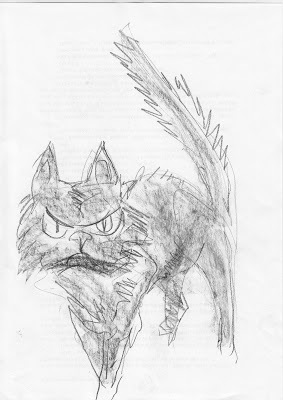
© Judith Key Back home, a string of monstrous caricatures flew from my pencil. (Daemon 6, editor 0). They captured the cat's character to a T! I knew it wasn't how the client saw her cat but I had to get them out of my system before tackling the chocolate box image she wanted. I managed it, after bending both my will and my pastels to her doting vision. Commissions can be a nightmare - (editor 6, daemon 0).
Animals feature strongly in my stories, but it was only recently that I realised how that cat haunts me. Since 2010 I've written two children's books and a rough draft of a third. Flicking through them to see how I've progressed, I realise that all of them have scenes featuring the same scowling creature. And here it is again - muscling in and dominating our chat. My daemon is a cat with attitude. Sue Price: Or an amorous tramp!
Judith: I shouldn't moan because it has given me much material over the years. Negative situations can yield much fruit. Humour works best if it has something to kick against. And yes, actually, I do like cats. It was just that cat.
I'm sure you must have had characters that you just can't shake off - who walk into scenes uninvited and demand to be written about. Sometimes they belong there and that's fine. In fact, they can take you on a journey you hadn't expected, and that is exciting.
Beware! Your blogspot might end up forever haunted by a glowering feline spectre...
Sue Price: That’s okay – I’m sure Blott can cope with even a psychotic cat spectre. What are you working on now?
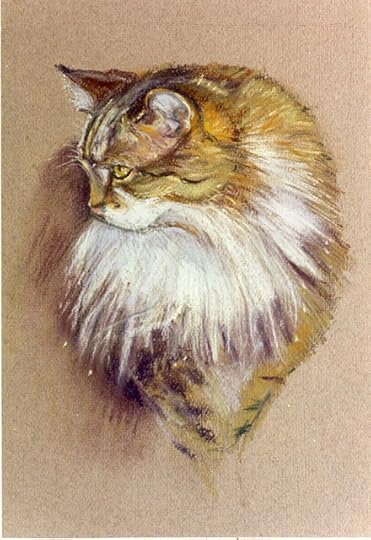 A cat Judith liked - © Judith Key
A cat Judith liked - © Judith KeyJudith: Oh, I'm lugging my latest book, The Goat Boy, up the North Face of the slush pile! I try to deal with it by visualising the slushpile as a parallel universe -
Lit. agent 1 - 'It's a nightmare - I came into the office and there was this goat on top of the slush pile.'
Lit. agent 2 - 'It's that Judith Key again - she never seals up her submissions properly. Don't put your hand in there - last time she sent us a psychotic cat - it had claws like Johnny Scissorhands, and I'm scarred for life.'
Lit. agent 3 - 'Think yourselves lucky - A M Heath's had an attack of the Sterkarms - the whole place has been taken over by battle hardened horsemen and time warps. Poor old Sarah Molloy's in a right state - her desk's in the 16th Century, the photocopier's in the 21st, and the phones don't work...'
Sue Price: Thanks Judith - for talking and for making me laugh! - You should set up your own blog, and make us laugh reguarly!
Some of Judith's work is available as greetings cards. For those, or if you're interested in her art-work, she can be contacted at inkandbrush99@gmail.com
And here's Blott, ready, willing and able to sort out any psycho cat spectres around here...
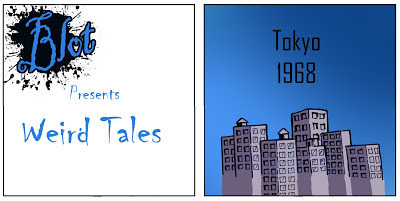
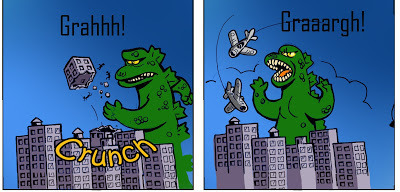
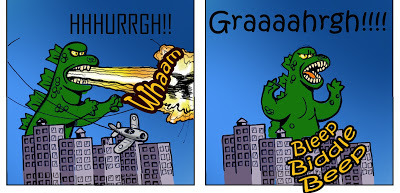
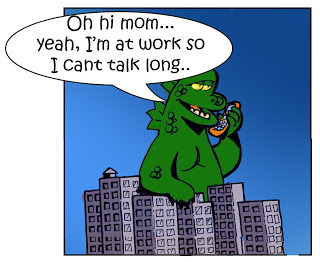
Published on January 25, 2013 16:05
January 18, 2013
A Peek Into My Work Room
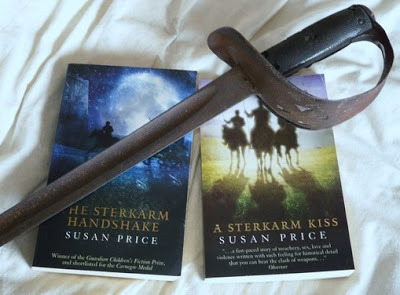 I've been working on the third book in the Sterkarm series, after The Sterkarm Handshake and A Sterkarm Kiss. In fact, I've been working on it for the past three years, amongst other things.
I've been working on the third book in the Sterkarm series, after The Sterkarm Handshake and A Sterkarm Kiss. In fact, I've been working on it for the past three years, amongst other things.Most of that work has been done on my laptop, in the corner of my sofa - partly because that suited me and partly because what I call 'my office' upstairs was in such a mess I could hardly get in the door.
Housework has never been a priority for me - and then when both my parents were ill a few years ago, a lot of other things fell by the wayside. And since they died, a lot of things haven't seemed worth bothering about. The 'office' became a place to stuff oddments into and close the door.
But the work on Sterkarm 3 is becoming increasingly serious. I felt the need of somewhere I could go that was away from my usual sofa-corner, a new place that would send my brain the signal, 'Time to work.'
Like many other writers, I've often found it productive to get out of the house altogether, and go and work in a library, pub or cafe. I spent a lot of time trying to think of somewhere. The library was out, because personally, I find the grim silence in libraries distracting! I prefer somewhere with a bit of talk and coming and going. But the trouble with pubs and cafes is that you have to keep buying food and drink as 'rent'. This is perfectly reasonable - if I was trying to make a living from running a cafe, I wouldn't want the place full of free-loading writers either. But reasonable as it is, I still can't afford it.
So I decided to clear my office of junk, generally tidy up, and see if it could serve as my change of scene. For the past week it's been working well. And I thought I should commemorate the tidy office, because it probably won't stay that way for very long.
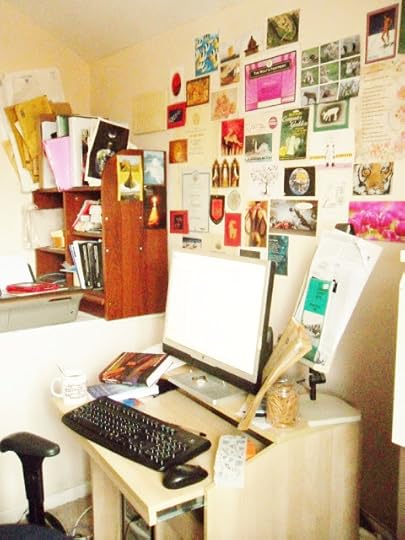 It may not seem remarkable to you, but those friends and relatives who have been allowed into the place over the past few years will be staggering with shock at this photo. There are places where you can put things down!
It may not seem remarkable to you, but those friends and relatives who have been allowed into the place over the past few years will be staggering with shock at this photo. There are places where you can put things down!I was too ashamed to publish a 'before' shot, but just imagine the desk and chair piled with archaelogical layers of papers, cds, books... And the floor littered with the pages of books ripped apart to make e-books.
I had a lot of photos, cards and such that I wanted to display: and decided to tack them to the back wall instead of having them cluttering shelves and falling off in drifts.
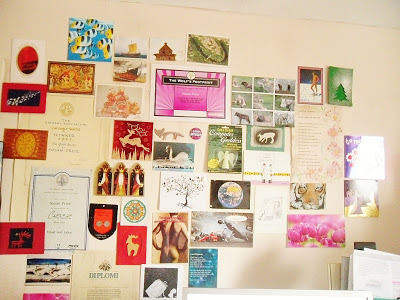 That male nude in the centre is a birthday card sent to me by my Mom and Dad. Obviously, that's the only reason it's up there - for sentimental reasons. Alongside it is the crashing racing-car card sent to me by my brother when I was learning to drive: 'Mirror - signal - manouvre - Oh !&%?!!' It still makes me laugh.
That male nude in the centre is a birthday card sent to me by my Mom and Dad. Obviously, that's the only reason it's up there - for sentimental reasons. Alongside it is the crashing racing-car card sent to me by my brother when I was learning to drive: 'Mirror - signal - manouvre - Oh !&%?!!' It still makes me laugh.Here's my own ghost-drum on its shelf, with its antler hammer, so I can summon the spirits - or Blott - when I need them.
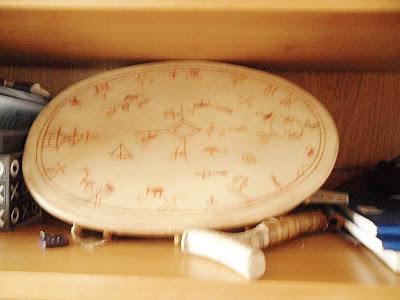
Here's a corner of one bookshelf -
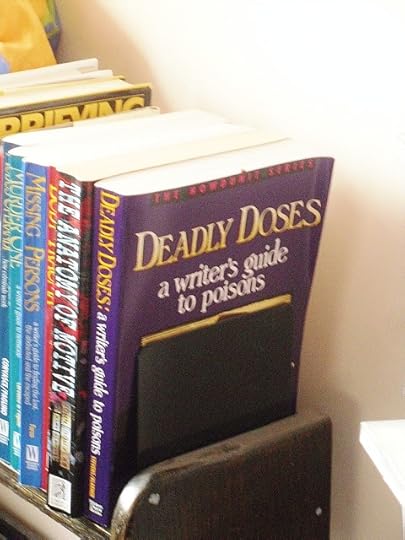
But now I have to get back to work, so I will hand you over to Blott...
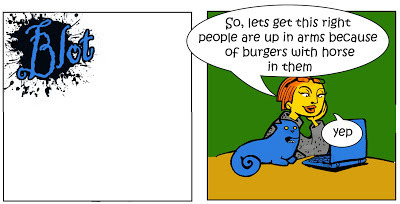
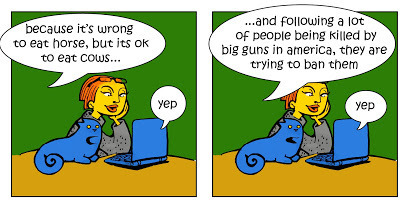
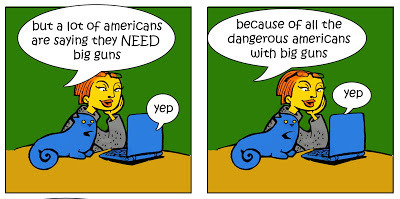
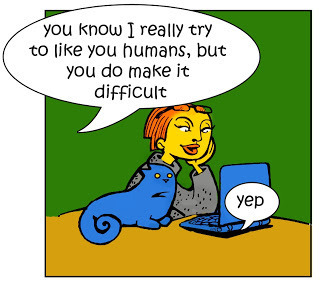 Weather Report: Friday 18th. Here, on top of the Black Country Plateau, it has been snowing gently but persistently all day. Kerbs have vanished, steps have become slopes, and my car is one big white mound. Don't think I'll be seeing anyone this weekend. Plenty of time to work!
Weather Report: Friday 18th. Here, on top of the Black Country Plateau, it has been snowing gently but persistently all day. Kerbs have vanished, steps have become slopes, and my car is one big white mound. Don't think I'll be seeing anyone this weekend. Plenty of time to work!
Published on January 18, 2013 16:05
Susan Price's Nennius Blog
"I have made a little heap of all I've found..."
"I have made a little heap of all I've found..."
...more
- Susan Price's profile
- 71 followers



